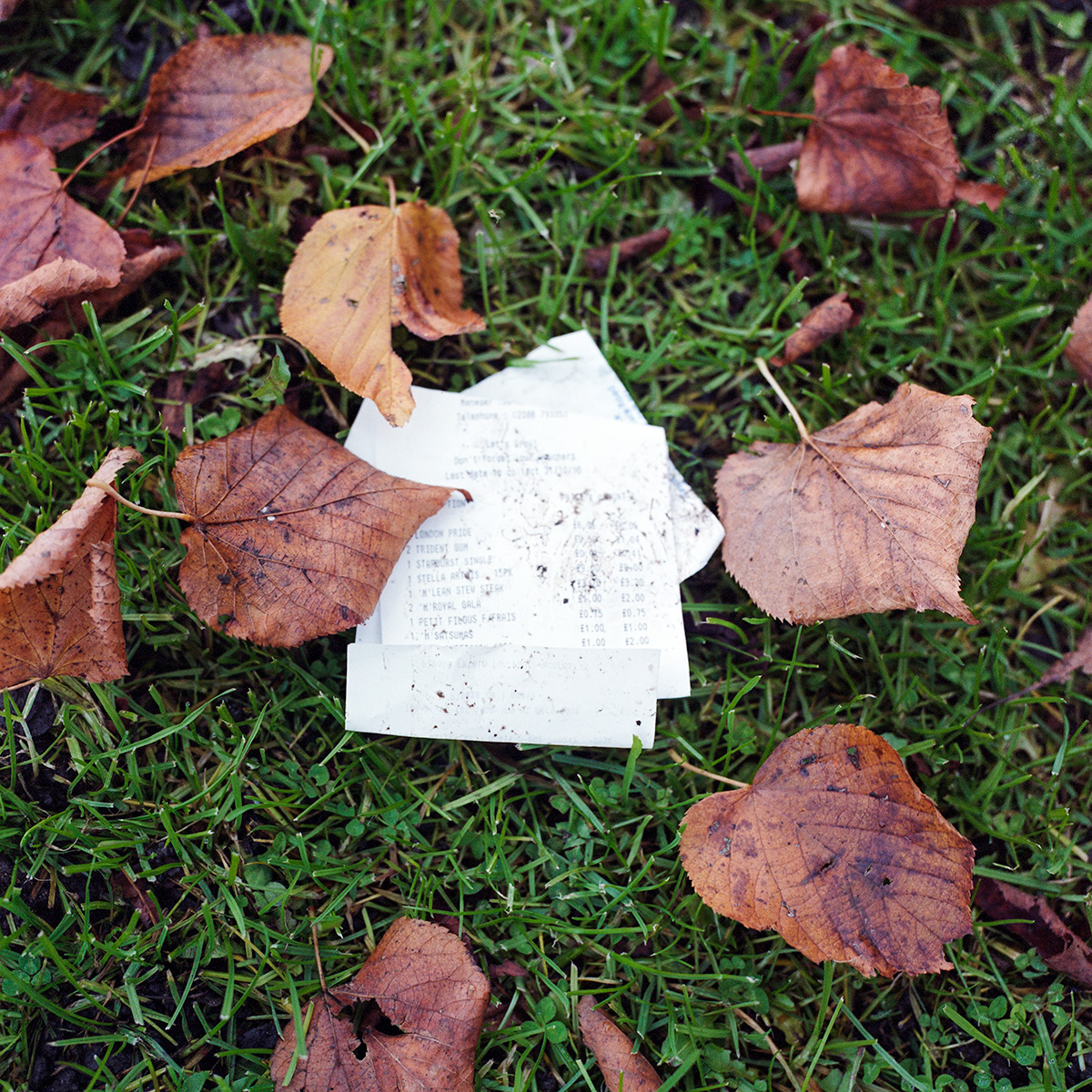





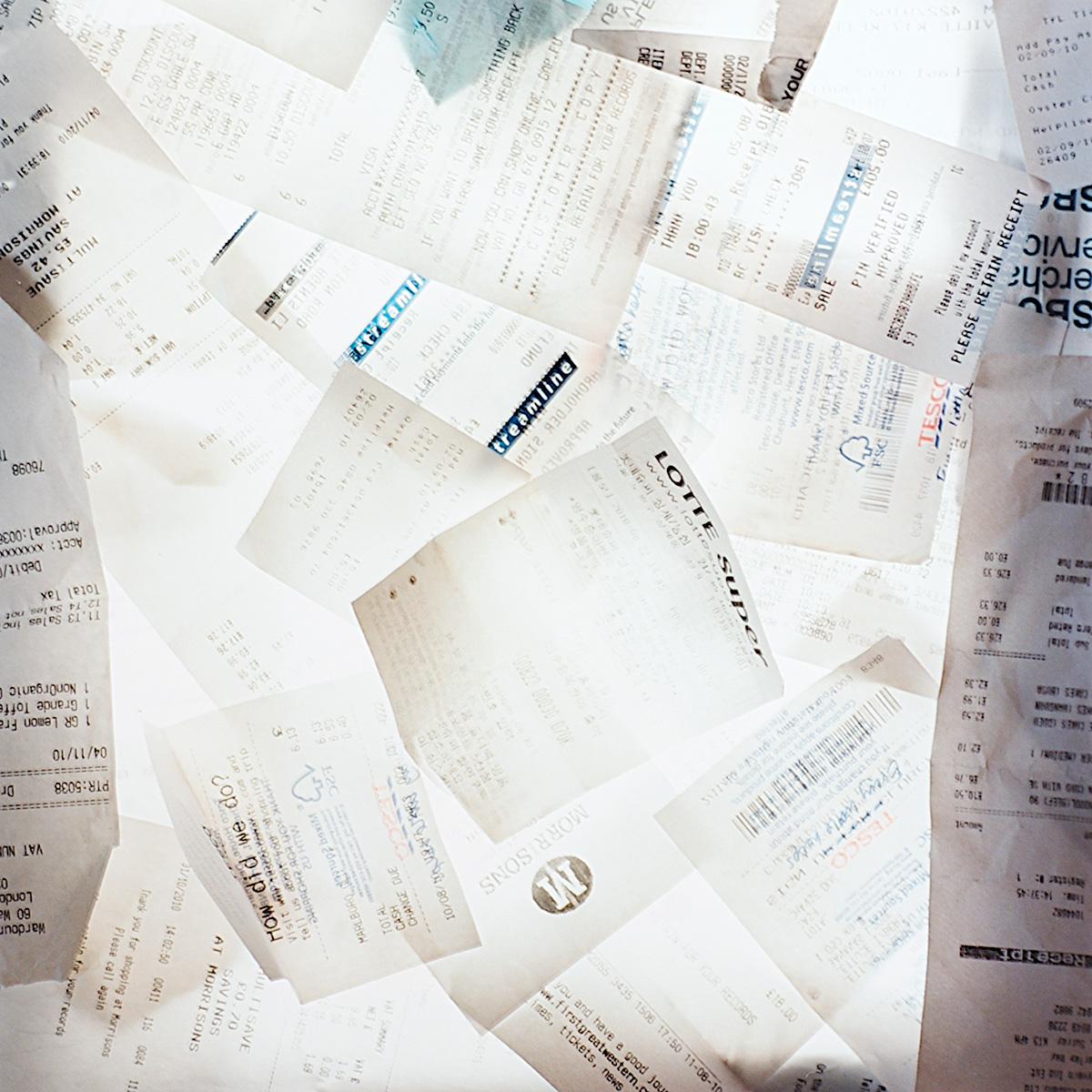
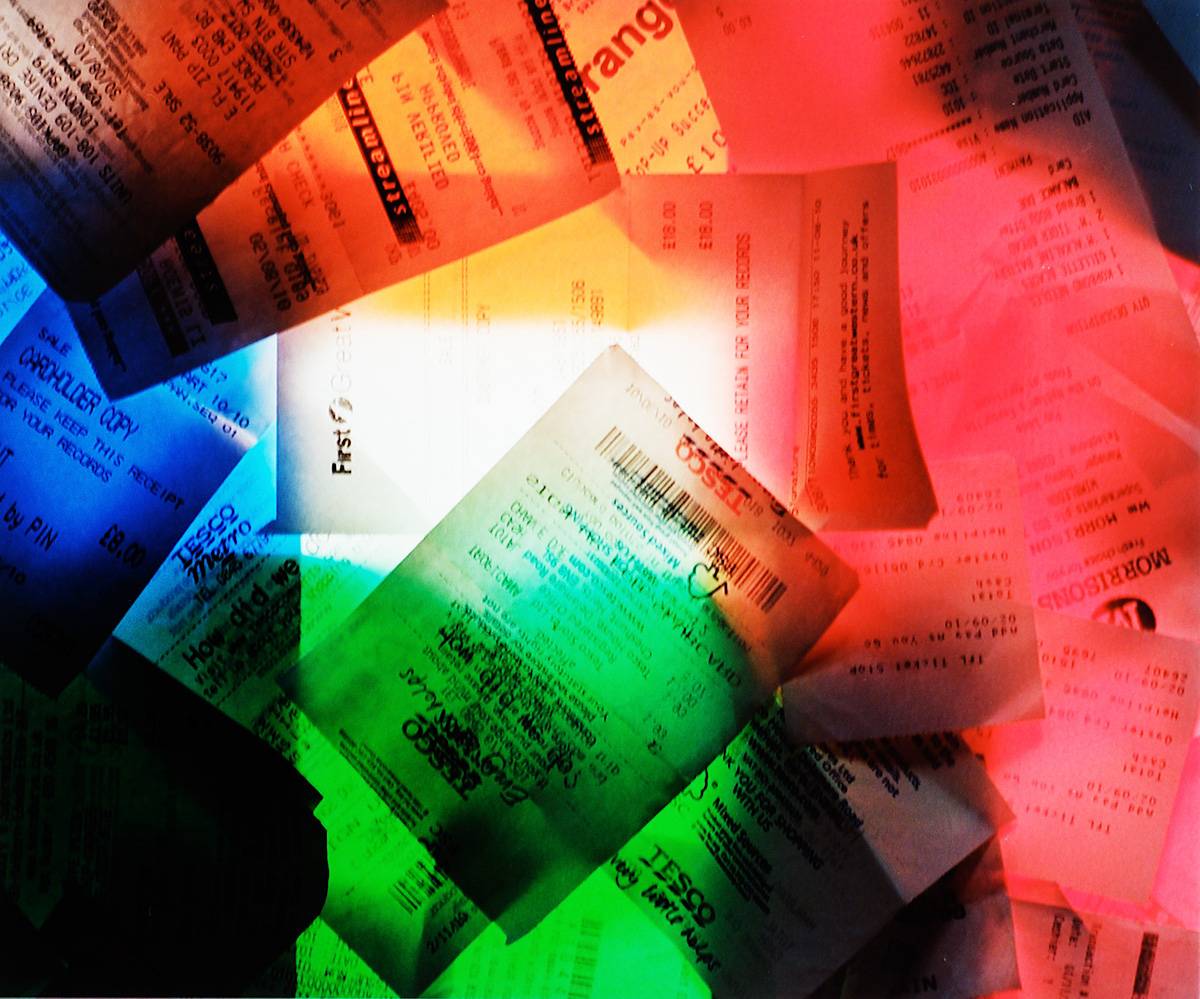
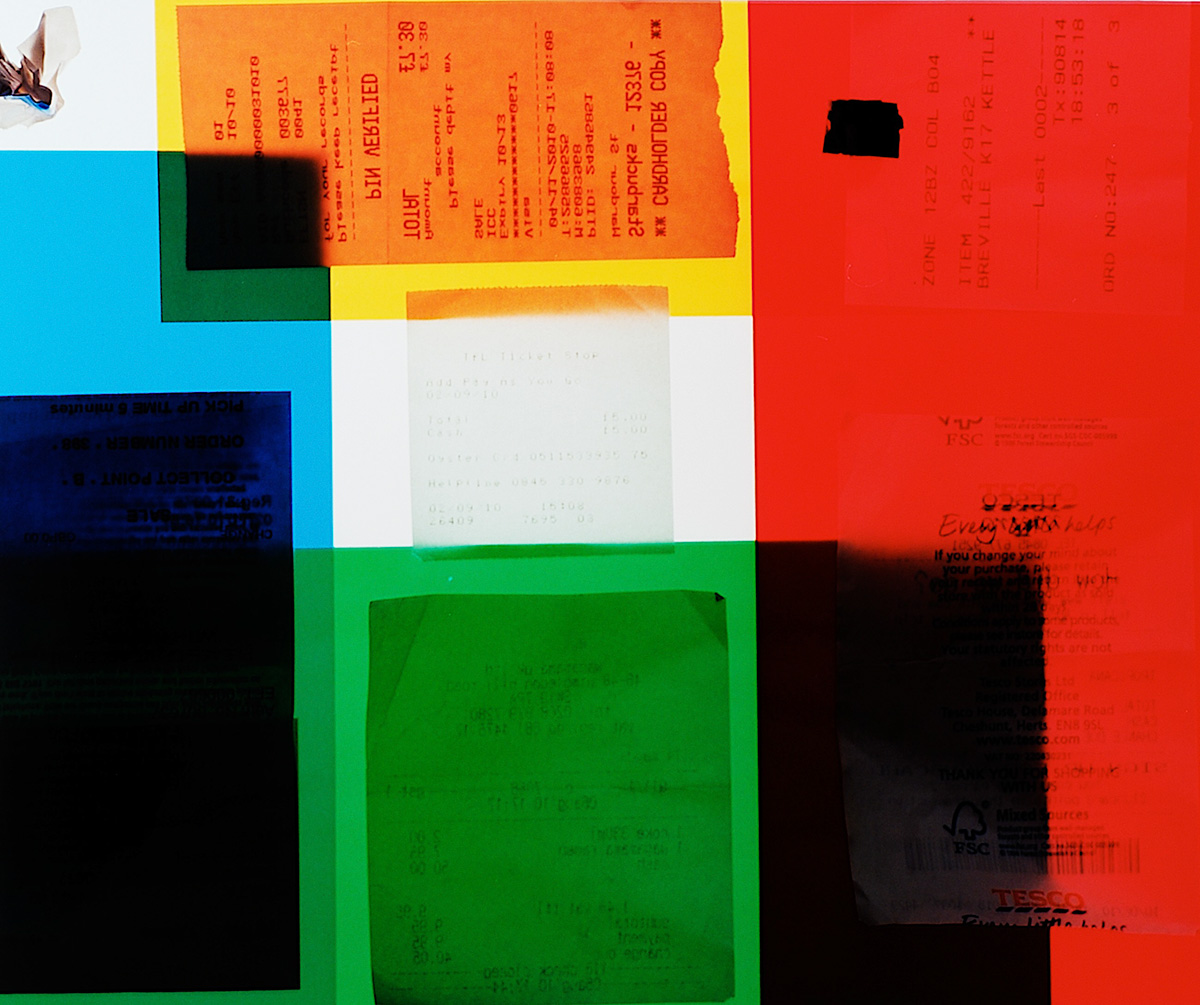

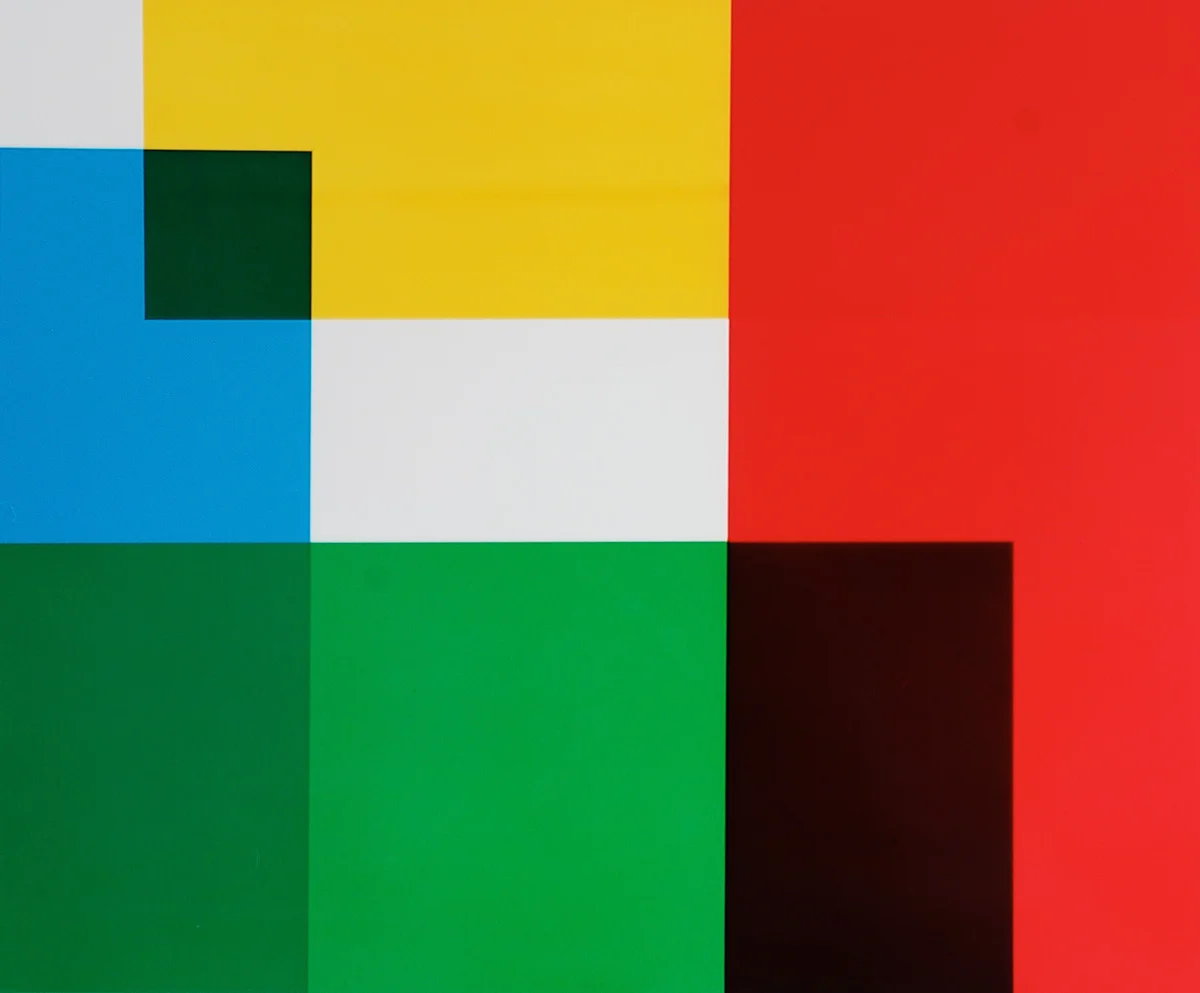

Receipts
Work statement
Man is by nature a social animal. A myriad of relationships between individuals, individual and society, and societies exist. The relations are forged within a society and there are many ways and positions to lead a social life. The boundaries of such free judgment, however, are one’s direct and indirect experiences. The society one partakes in serves as a standard to unwittingly determine one’s set of values; and what lies beyond will be elusive, whatever the circumstances. Being a free thinker and an autonomous agent is only possible under the predetermined standard of one’s society. Analyzing a society as a single or several structures or systems has a long and diverse tradition since the modern times - from Karl Marx to Roland Barthes and Michel Foucault. But one must delve into how an individual exists, has existed, and will exist as a self-determining agent in a society prior to the consideration of structures or systems. Definitions sometimes vary according to the times and conditions. Developments and its undercurrents deemed real may later take on shifting interpretations, and various points in one’s reality are construed differently with time. On the contrary, a single trait may represent a day and age. Today’s society is defined with terms such as globalization, diversity, freedom, media, and capitalism. A society may not be defined by any single factor - each is defined as part of interactions like that between individuals, and such exchanges also bring about creation or extinction. But the question remains of how to define individuals amidst the crowd of terms defining a society. What are the differences between individuals of modern and contemporary times? Would the two be identical save for the social structure? What significance do individuals hold in a society created by men? Jean Paul Sartre (2007, p.27) wrote that “existence comes before essence – or, if you will, that we must begin from the subjective.” Observing who we are in relation to the society we live in today will lead us to the identity of an individual in the contemporary world.
Reality of an individual
Human reality as accumulated individual experience is represented, in the words of Jean Baudrillard (1994), in the signs and images consumed. An experience (sign/image) creates another, and the new set begets another; until reaching a point where the reality is no longer differentiated from the sign and image, generating simulacra that are more real than reality itself. The world today is one of simulacra and simulation that is brimming with signs and images without the reality. This leads to the question what is the most crucial sign and image to the contemporary? There are many terms that represent today’s society. But the one that is the most indispensable yet associated with an array of pathological phenomenon; offering both convenience and limitations is money.
Money and Desire
Money underpins a capitalist society. The proposition is reminiscent of personalities such as Karl Marx, Georg Simmel, and Marx Webber from the days of transition from the modern to contemporary when the bourgeoisie were emerging. Their ideas having been tweaked here and there remain relevant today. How does the capital - or more blatantly, money - shape our lives and existence? It is said that the necessities of life are feed, lodge, and clothe; but there is one other important element today, which is desire. ‘Lefevbre argued that ‘Human beings have complex and multifaceted need and desires, the pursuit of which makes them richer and more fulfilled individuals.’(Gardiner, 2000, p.81) His view was that ‘Capitalism, needless to say, encourages the attainment of human desire only through the medium of capital, which leads to the fetishization of money and commodities.’ (Ibid, p.81) Then aside from the question of what induces such desires, what are the marks of the desires? Georg Simmel (1990) said that money enables more individual freedom. However, a greater volume of desire permeates the society compared to the increased personal freedom, and desire continues to beget another form of desire just as money makes more money and requires more money.
Proof of an exchange
Consumption occurs in multitude directions from daily necessities to extravagant items. Another common form today is the consumption of services such as renting a home or a car, or booking hotels and flights for travel. Making a purchase gives one the possession of a tangible object until the value has been exhausted - a call the purchaser makes. Other than which, what consumption leaves us with is a fragment of the satisfied memory in the moment (though there may also be a photograph or a video). This may have been egged on within the social structure, or may be traced to a genuine individual need. Money is gained whether through labor, capital, or other means. The money exchanged with one’s values is then deployed accordingly to one’s needs. The possessed money will eventually be spent. The goods and services exchanged may be a home, a car, appliances for the home, or a memory of a trip. Money must be earned again to meet more desires. The repetition of such gratified and used desires is evocative of objects that are discarded and replaced in the short cycle of changing desires; and is manifested in the form of a receipt that is merely the evidence of the simple transaction that took place.
I discard, therefore I am
The constantly printed receipt is a trace of one’s life and evidence of fulfilled desires. If a sign has been consumed, it leaves behind another signage that is the receipt. There is a receipt for every act of consumption. The slip is a shadow to how one has spent. Receipts take form as do the objects, and will too be discarded. (There are those who cling onto receipts, as there are those who cannot bring themselves to depart with their belongings.) The concept is one of accumulation, different from the act of collecting. It is one more type of accumulation regarding one’s being. There is a strange sense of nostalgia for the discarded. From objects out-of-place to objects abandoned upon losing practical value - this work attempts to shed light on the contemporary capitalist society while paying tribute to the discarded. The trail of letters in a crumpled receipt - even if it still of use to the owner - is suggestive of one’s existence and the inundating desires showcased by the soon to be wasted objects. Rene Descartes’ proposition Cogito ergo sum may well be “I discard, therefore I am.”
------------------------------------------------------------------------------------------------------------------------------------
작업노트
인간은 사회적 동물이다. 사회 속에서 개인-개인, 개인-사회, 사회-사회 등의 다양한 관계를 맺으며 살아간다. 이 모든 관계들이 사회 속에서 이뤄지며 이런 사회를 살아가는 다양한 방법과 의견들이 존재한다. 하지만 우리는 오직 우리가 직/간접적으로 경험한 범위 내에서만 자유롭게 판단하고 생활한다. 우리가 속한 사회는 자신도 모르게 우리의 가치를 결정하는 하나의 기준이 되며 그 기준 밖의 것은 어떠한 경우에도 우리 스스로의 것이 될 수 없다. 즉, 우리가 자유롭게 생각하고 주체적으로 살고 있다는 것은 우리가 속한 사회나 집단 속에서 이미 결정되어 있는 기준 아래서만 가능한 것이다. 사회를 하나 혹은 여러개의 구조나 시스템으로써 분석하고 탐구하는 것은 근대 이후 지속적으로 다양하게 이어져온 부분이다. 막스Marx에서부터 바르트Barthes, 푸코Foucault 등에 이르기까지 많은 학자들과 의견들이 존재한다. 하지만 이러한 구조나 시스템 이전에 우리는 사회 속에서 스스로가 어떻게 하나의 인간으로서, 스스로 판단하고 결정하는 개별 주체로써 존재하는지, 존재해왔는지 그리고 존재해나가는지를 생각해봐야만 한다. 어떤 사실은 시대와 상황에 따라 다르게 정의된다. 진실로 믿어졌던 현상과 그 이면의 것들이 시간이 지나면서 다른 것으로 해석되어지기도 하며 현실의 많은 순간들은 시간에 따라 매번 다른 의미로 해석된다. 하지만 반대로 생각하면 어떠한 특징 하나가 그 시대를 나타내는 것이 될 수도 있는 것이다. 현대 사회는 세계화, 다양성, 자유, 미디어, 자본주의 등 다양한 말들로 정의된다. 이들 중 한가지만으로 사회는 정의될 수 없으며 개인과 마찬가지로 상호관계 속에 각자가 정의되고 또한 상호관계를 통해 다른 새로운 것들을 만들어내기도 하고 반대로 소멸시키기도 한다. 하지만 사회를 정의하는 수많은 말들 속에서 개인은 어떻게 정의되는지에 대한 의문은 여전히 남아있다. 근대의 개인과 현대의 개인은 어떤 차이점을 갖고 있는가? 사회적 구조를 제외하면 여전히 동일한 인간인가? 인간 스스로가 만들어 낸 사회 속에서 개인은 어떤 의미를 갖고 있는가? 사르트르Sartre의 유명한 말 “존재는 실존에 우선한다.”로부터 시작하여 ‘나 스스로에 대한’ 정체성을 현대사회의 어떠한 관계 속에서 확인할 수 있는지를 살펴보면 적어도 현대사회를 살아가는 개인의 정체성에 대한 실마리는 찾을 수 있을 것이다.
개인의 경험이 축적된 개개인의 현실은, 보드리야르Baudrillard의 의견을 빌자면, 그들이 소비하고 있는 기호와 이미지로 대변된다고 할 수 있다. 하나의 경험(기호/이미지)은 또 다른 경험(기호/이미지)를 만들어내고 이렇게 생겨난 경험(기호/이미지)는 또 새로은 기호/이미지를 만들어 낸다. 결국 실재와 기호/이미지를 구별할 수 없는 단계에 이르게 되고, 점점 더 실재보다 더 실재적인 초과실재(Simulacra)가 생겨나게 된다. 실재가 없는 기호/이미지만이 넘치는 세계가 바로 우리의 시대, 즉 시뮬라크라와 시뮬라시옹의 시대이다. 그렇다면 현대인에게 있어서 핵심적인 기호와 이미지는 어떤것인가. 현대 사회를 잘 나타낼 수 있는 단어들은 위에서 말한 것들 외에도 여러가지가 있다. 하지만 이러한 것들 중에 현대 사회를 살아가는데 있어서 없어서는 안되는 것임과 더불어 여러 병리적 현상들을 만들어내며 편의와 제약을 동시에 만들어내는 가장 핵심적인 것은 바로 돈이다.
자본주의 사회란 돈이 그 기본이 되는 사회이다. 돈과 자본과 관련해서 가장 먼저 떠오르는 이는 막스 Marx, 짐멜Simmel, 베버Webber 등 근대사회 이후 현대로 넘어오면서 부르주아가 나타나기 시작하는 초기 자본주의에 대한 이론가들이 가장 먼저 떠오를 것이다. 하지만 이들의 생각은 조금씩 변화를 거듭해오며 지금까지 이어져오고 있으며 여전히 유효한 부분이 많다. 이들이 얘기하는 자본, 쉽게 말해 돈은 어떤 방식으로 우리를 살아가게 그리고 존재하게 하는 것일까. 사람이 살아가기 위해 꼭 필요한 것이 의식주라고 한다. 현대 사회에는 이 이외에 다른 중요한 한가지가 더 존재하는데 이것은 바로 욕망이다. 르페브르Lefevbre는 ‘인간은 복잡하고 다면적인 필요와 욕망을 가지고 있다. 그리고 이것들의 추구는 그들을 더 부유하고 충만한 개인으로 만들어준다.’라고 주장하며 '말할것도 없이 자본주의는 돈과 상품의 숭배를 이끄는 자본을 매개로 인간의 욕망의 획득을 장려한다.'라고 했다.(가디너Gardiner, p.81) 그렇다면 이러한 욕망을 불러일으키는 원인은 차치하고 이 욕망은 우리에게 어떤 것을 남겨주는 것일까. 짐멜Simmel은 돈이 있으므로써 개인의 자유가 많아진다고 말했다. 하지만 돈을 통해 사람들의 자유가 늘어난것보다 더 많은 양의 욕망이 우리 사회를 차지하고 있고 돈이 돈을 만들고 필요로하는 것처럼 욕망이 또다른 욕망을 지속적으로 생성해 내고 있는 것이다.
사람들의 소비는 생필품에서부터 시작해서 사치품까지 다양한 방향으로 이뤄진다. 또한 이 뿐만 아니라 집이나 차를 렌트하거나 여행을 위해 호텔을 예약하고 항공권을 구매하는 등 다양한 서비스에 대한 소비도 오늘날의 보편적 소비행태 중 하나이다. 생필품이든 사치품이든 물건을 사면 그 물건의 가치가 다 할 때까지는 – 그 물건의 가치가 언제까지 지속될지는 전적으로 구매자에게 달려있지만 - 하나의 손에 잡을 수 있는 물건으로 우리에게 남아있다. 하지만 그 외의 소비가 우리에게 남겨주는 것은 그 순간의 만족감을 포함한 기억 – 때로는 사진이나 동영상일수도 있겠지만 – 뿐이다. 이 모든 것들은 어쩌면 사회 구조 속에서 부추겨진 것일 수도 있고 진정 개인이 필요로 했기 때문일 수도 있다. 노동을 통해서든 자본을 통해서든 아니면 다른 어떤 방식을 통해서든 사람들은 돈을 얻었고 자신의 어떤 가치와 바꾼 돈을 각자의 필요에 따라 다른 방식으로 사용한다. 가진 돈은 언젠가는 쓰여지기 마련이고 돈으로 바꾼 재화나 서비스는 집일수도 있고 차일 수도 있으며 집을 채우는 물건일수도 또는 여행의 기억일 수도 있다. 또한 이러한 욕망을 충족시키기 위해 사람들은 또 돈을 벌기 위해 노력한다. 이렇게 충족되고 사용되는 욕망의 반복은 어쩌면 그 욕망의 변화 주기만큼이나 빨리 버려지고 새로 바뀌는 물건과 다를바 없으며 이는 결국 단순 교환의 증명일 뿐인 영수증의 모습과도 같다.
영수증은 우리의 삶의 흔적이자 우리가 살아가는데 있어서는 없어서는 안 될 것 뿐만 아니라 우리의 욕망을 충족시켜주는 모든 부분에 대한 증명이다. 만약 어떤 기호를 소비한 것이라면 그 기호는 영수증이라는 또 다른 기호로 남는다. 소비한 것 이면에는 항상 영수증이 남아있으며 영수증은 소비의 그림자처럼 그 뒤를 따라다닌다. 영수증은 물건과 마찬가지로 모습을 가지고 있고 또한 그와 마찬가지로 버려진다.(물건을 잘버리지 못하는 이들이 있는 것처럼 영수증을 잘버리지 못하는 이들도 있다.) 이는 수집과는 다른 개념의 축적이라고 할 수 있다. 바로 우리 삶에 대한, 존재하는 방식에 대한 또 하나의 축적물인 것이다. 우리는 버려진 물건들에 대해 묘한 향수를 갖는다. 제자리에 있지 않은 물건들과 그 물건의 소유자로부터 활용가치를 상실하여 버려진 것들에 이르기까지. 이 작업은 현대 자본주의 사회에 대한 것임과 동시에 모든 버려진 물건에 대한 것이다. 비록 아직사용가치가 다 하진 않아 버려지진 않았을지라도, 버려진 영수증 속의 글자의 흐름을, 흔적들을 보고 있노라면 한 개인의 삶의 일부분이 또렷히 들여다보이고 아울러 영수증과 같이 곧 버려질 그 물건들이, 그리고 세상을 가득채우고 있는 욕망들이 함께 비쳐보인다. Cogito ergo sum이라는 데카르트의 명제는 어쩌면 “I discard, therefore I am”으로 바꿔야할 지도 모르겠다.
Receipts
Work statement
Man is by nature a social animal. A myriad of relationships between individuals, individual and society, and societies exist. The relations are forged within a society and there are many ways and positions to lead a social life. The boundaries of such free judgment, however, are one’s direct and indirect experiences. The society one partakes in serves as a standard to unwittingly determine one’s set of values; and what lies beyond will be elusive, whatever the circumstances. Being a free thinker and an autonomous agent is only possible under the predetermined standard of one’s society. Analyzing a society as a single or several structures or systems has a long and diverse tradition since the modern times - from Karl Marx to Roland Barthes and Michel Foucault. But one must delve into how an individual exists, has existed, and will exist as a self-determining agent in a society prior to the consideration of structures or systems. Definitions sometimes vary according to the times and conditions. Developments and its undercurrents deemed real may later take on shifting interpretations, and various points in one’s reality are construed differently with time. On the contrary, a single trait may represent a day and age. Today’s society is defined with terms such as globalization, diversity, freedom, media, and capitalism. A society may not be defined by any single factor - each is defined as part of interactions like that between individuals, and such exchanges also bring about creation or extinction. But the question remains of how to define individuals amidst the crowd of terms defining a society. What are the differences between individuals of modern and contemporary times? Would the two be identical save for the social structure? What significance do individuals hold in a society created by men? Jean Paul Sartre (2007, p.27) wrote that “existence comes before essence – or, if you will, that we must begin from the subjective.” Observing who we are in relation to the society we live in today will lead us to the identity of an individual in the contemporary world.
Reality of an individual
Human reality as accumulated individual experience is represented, in the words of Jean Baudrillard (1994), in the signs and images consumed. An experience (sign/image) creates another, and the new set begets another; until reaching a point where the reality is no longer differentiated from the sign and image, generating simulacra that are more real than reality itself. The world today is one of simulacra and simulation that is brimming with signs and images without the reality. This leads to the question what is the most crucial sign and image to the contemporary? There are many terms that represent today’s society. But the one that is the most indispensable yet associated with an array of pathological phenomenon; offering both convenience and limitations is money.
Money and Desire
Money underpins a capitalist society. The proposition is reminiscent of personalities such as Karl Marx, Georg Simmel, and Marx Webber from the days of transition from the modern to contemporary when the bourgeoisie were emerging. Their ideas having been tweaked here and there remain relevant today. How does the capital - or more blatantly, money - shape our lives and existence? It is said that the necessities of life are feed, lodge, and clothe; but there is one other important element today, which is desire. ‘Lefevbre argued that ‘Human beings have complex and multifaceted need and desires, the pursuit of which makes them richer and more fulfilled individuals.’(Gardiner, 2000, p.81) His view was that ‘Capitalism, needless to say, encourages the attainment of human desire only through the medium of capital, which leads to the fetishization of money and commodities.’ (Ibid, p.81) Then aside from the question of what induces such desires, what are the marks of the desires? Georg Simmel (1990) said that money enables more individual freedom. However, a greater volume of desire permeates the society compared to the increased personal freedom, and desire continues to beget another form of desire just as money makes more money and requires more money.
Proof of an exchange
Consumption occurs in multitude directions from daily necessities to extravagant items. Another common form today is the consumption of services such as renting a home or a car, or booking hotels and flights for travel. Making a purchase gives one the possession of a tangible object until the value has been exhausted - a call the purchaser makes. Other than which, what consumption leaves us with is a fragment of the satisfied memory in the moment (though there may also be a photograph or a video). This may have been egged on within the social structure, or may be traced to a genuine individual need. Money is gained whether through labor, capital, or other means. The money exchanged with one’s values is then deployed accordingly to one’s needs. The possessed money will eventually be spent. The goods and services exchanged may be a home, a car, appliances for the home, or a memory of a trip. Money must be earned again to meet more desires. The repetition of such gratified and used desires is evocative of objects that are discarded and replaced in the short cycle of changing desires; and is manifested in the form of a receipt that is merely the evidence of the simple transaction that took place.
I discard, therefore I am
The constantly printed receipt is a trace of one’s life and evidence of fulfilled desires. If a sign has been consumed, it leaves behind another signage that is the receipt. There is a receipt for every act of consumption. The slip is a shadow to how one has spent. Receipts take form as do the objects, and will too be discarded. (There are those who cling onto receipts, as there are those who cannot bring themselves to depart with their belongings.) The concept is one of accumulation, different from the act of collecting. It is one more type of accumulation regarding one’s being. There is a strange sense of nostalgia for the discarded. From objects out-of-place to objects abandoned upon losing practical value - this work attempts to shed light on the contemporary capitalist society while paying tribute to the discarded. The trail of letters in a crumpled receipt - even if it still of use to the owner - is suggestive of one’s existence and the inundating desires showcased by the soon to be wasted objects. Rene Descartes’ proposition Cogito ergo sum may well be “I discard, therefore I am.”
------------------------------------------------------------------------------------------------------------------------------------
작업노트
인간은 사회적 동물이다. 사회 속에서 개인-개인, 개인-사회, 사회-사회 등의 다양한 관계를 맺으며 살아간다. 이 모든 관계들이 사회 속에서 이뤄지며 이런 사회를 살아가는 다양한 방법과 의견들이 존재한다. 하지만 우리는 오직 우리가 직/간접적으로 경험한 범위 내에서만 자유롭게 판단하고 생활한다. 우리가 속한 사회는 자신도 모르게 우리의 가치를 결정하는 하나의 기준이 되며 그 기준 밖의 것은 어떠한 경우에도 우리 스스로의 것이 될 수 없다. 즉, 우리가 자유롭게 생각하고 주체적으로 살고 있다는 것은 우리가 속한 사회나 집단 속에서 이미 결정되어 있는 기준 아래서만 가능한 것이다. 사회를 하나 혹은 여러개의 구조나 시스템으로써 분석하고 탐구하는 것은 근대 이후 지속적으로 다양하게 이어져온 부분이다. 막스Marx에서부터 바르트Barthes, 푸코Foucault 등에 이르기까지 많은 학자들과 의견들이 존재한다. 하지만 이러한 구조나 시스템 이전에 우리는 사회 속에서 스스로가 어떻게 하나의 인간으로서, 스스로 판단하고 결정하는 개별 주체로써 존재하는지, 존재해왔는지 그리고 존재해나가는지를 생각해봐야만 한다. 어떤 사실은 시대와 상황에 따라 다르게 정의된다. 진실로 믿어졌던 현상과 그 이면의 것들이 시간이 지나면서 다른 것으로 해석되어지기도 하며 현실의 많은 순간들은 시간에 따라 매번 다른 의미로 해석된다. 하지만 반대로 생각하면 어떠한 특징 하나가 그 시대를 나타내는 것이 될 수도 있는 것이다. 현대 사회는 세계화, 다양성, 자유, 미디어, 자본주의 등 다양한 말들로 정의된다. 이들 중 한가지만으로 사회는 정의될 수 없으며 개인과 마찬가지로 상호관계 속에 각자가 정의되고 또한 상호관계를 통해 다른 새로운 것들을 만들어내기도 하고 반대로 소멸시키기도 한다. 하지만 사회를 정의하는 수많은 말들 속에서 개인은 어떻게 정의되는지에 대한 의문은 여전히 남아있다. 근대의 개인과 현대의 개인은 어떤 차이점을 갖고 있는가? 사회적 구조를 제외하면 여전히 동일한 인간인가? 인간 스스로가 만들어 낸 사회 속에서 개인은 어떤 의미를 갖고 있는가? 사르트르Sartre의 유명한 말 “존재는 실존에 우선한다.”로부터 시작하여 ‘나 스스로에 대한’ 정체성을 현대사회의 어떠한 관계 속에서 확인할 수 있는지를 살펴보면 적어도 현대사회를 살아가는 개인의 정체성에 대한 실마리는 찾을 수 있을 것이다.
개인의 경험이 축적된 개개인의 현실은, 보드리야르Baudrillard의 의견을 빌자면, 그들이 소비하고 있는 기호와 이미지로 대변된다고 할 수 있다. 하나의 경험(기호/이미지)은 또 다른 경험(기호/이미지)를 만들어내고 이렇게 생겨난 경험(기호/이미지)는 또 새로은 기호/이미지를 만들어 낸다. 결국 실재와 기호/이미지를 구별할 수 없는 단계에 이르게 되고, 점점 더 실재보다 더 실재적인 초과실재(Simulacra)가 생겨나게 된다. 실재가 없는 기호/이미지만이 넘치는 세계가 바로 우리의 시대, 즉 시뮬라크라와 시뮬라시옹의 시대이다. 그렇다면 현대인에게 있어서 핵심적인 기호와 이미지는 어떤것인가. 현대 사회를 잘 나타낼 수 있는 단어들은 위에서 말한 것들 외에도 여러가지가 있다. 하지만 이러한 것들 중에 현대 사회를 살아가는데 있어서 없어서는 안되는 것임과 더불어 여러 병리적 현상들을 만들어내며 편의와 제약을 동시에 만들어내는 가장 핵심적인 것은 바로 돈이다.
자본주의 사회란 돈이 그 기본이 되는 사회이다. 돈과 자본과 관련해서 가장 먼저 떠오르는 이는 막스 Marx, 짐멜Simmel, 베버Webber 등 근대사회 이후 현대로 넘어오면서 부르주아가 나타나기 시작하는 초기 자본주의에 대한 이론가들이 가장 먼저 떠오를 것이다. 하지만 이들의 생각은 조금씩 변화를 거듭해오며 지금까지 이어져오고 있으며 여전히 유효한 부분이 많다. 이들이 얘기하는 자본, 쉽게 말해 돈은 어떤 방식으로 우리를 살아가게 그리고 존재하게 하는 것일까. 사람이 살아가기 위해 꼭 필요한 것이 의식주라고 한다. 현대 사회에는 이 이외에 다른 중요한 한가지가 더 존재하는데 이것은 바로 욕망이다. 르페브르Lefevbre는 ‘인간은 복잡하고 다면적인 필요와 욕망을 가지고 있다. 그리고 이것들의 추구는 그들을 더 부유하고 충만한 개인으로 만들어준다.’라고 주장하며 '말할것도 없이 자본주의는 돈과 상품의 숭배를 이끄는 자본을 매개로 인간의 욕망의 획득을 장려한다.'라고 했다.(가디너Gardiner, p.81) 그렇다면 이러한 욕망을 불러일으키는 원인은 차치하고 이 욕망은 우리에게 어떤 것을 남겨주는 것일까. 짐멜Simmel은 돈이 있으므로써 개인의 자유가 많아진다고 말했다. 하지만 돈을 통해 사람들의 자유가 늘어난것보다 더 많은 양의 욕망이 우리 사회를 차지하고 있고 돈이 돈을 만들고 필요로하는 것처럼 욕망이 또다른 욕망을 지속적으로 생성해 내고 있는 것이다.
사람들의 소비는 생필품에서부터 시작해서 사치품까지 다양한 방향으로 이뤄진다. 또한 이 뿐만 아니라 집이나 차를 렌트하거나 여행을 위해 호텔을 예약하고 항공권을 구매하는 등 다양한 서비스에 대한 소비도 오늘날의 보편적 소비행태 중 하나이다. 생필품이든 사치품이든 물건을 사면 그 물건의 가치가 다 할 때까지는 – 그 물건의 가치가 언제까지 지속될지는 전적으로 구매자에게 달려있지만 - 하나의 손에 잡을 수 있는 물건으로 우리에게 남아있다. 하지만 그 외의 소비가 우리에게 남겨주는 것은 그 순간의 만족감을 포함한 기억 – 때로는 사진이나 동영상일수도 있겠지만 – 뿐이다. 이 모든 것들은 어쩌면 사회 구조 속에서 부추겨진 것일 수도 있고 진정 개인이 필요로 했기 때문일 수도 있다. 노동을 통해서든 자본을 통해서든 아니면 다른 어떤 방식을 통해서든 사람들은 돈을 얻었고 자신의 어떤 가치와 바꾼 돈을 각자의 필요에 따라 다른 방식으로 사용한다. 가진 돈은 언젠가는 쓰여지기 마련이고 돈으로 바꾼 재화나 서비스는 집일수도 있고 차일 수도 있으며 집을 채우는 물건일수도 또는 여행의 기억일 수도 있다. 또한 이러한 욕망을 충족시키기 위해 사람들은 또 돈을 벌기 위해 노력한다. 이렇게 충족되고 사용되는 욕망의 반복은 어쩌면 그 욕망의 변화 주기만큼이나 빨리 버려지고 새로 바뀌는 물건과 다를바 없으며 이는 결국 단순 교환의 증명일 뿐인 영수증의 모습과도 같다.
영수증은 우리의 삶의 흔적이자 우리가 살아가는데 있어서는 없어서는 안 될 것 뿐만 아니라 우리의 욕망을 충족시켜주는 모든 부분에 대한 증명이다. 만약 어떤 기호를 소비한 것이라면 그 기호는 영수증이라는 또 다른 기호로 남는다. 소비한 것 이면에는 항상 영수증이 남아있으며 영수증은 소비의 그림자처럼 그 뒤를 따라다닌다. 영수증은 물건과 마찬가지로 모습을 가지고 있고 또한 그와 마찬가지로 버려진다.(물건을 잘버리지 못하는 이들이 있는 것처럼 영수증을 잘버리지 못하는 이들도 있다.) 이는 수집과는 다른 개념의 축적이라고 할 수 있다. 바로 우리 삶에 대한, 존재하는 방식에 대한 또 하나의 축적물인 것이다. 우리는 버려진 물건들에 대해 묘한 향수를 갖는다. 제자리에 있지 않은 물건들과 그 물건의 소유자로부터 활용가치를 상실하여 버려진 것들에 이르기까지. 이 작업은 현대 자본주의 사회에 대한 것임과 동시에 모든 버려진 물건에 대한 것이다. 비록 아직사용가치가 다 하진 않아 버려지진 않았을지라도, 버려진 영수증 속의 글자의 흐름을, 흔적들을 보고 있노라면 한 개인의 삶의 일부분이 또렷히 들여다보이고 아울러 영수증과 같이 곧 버려질 그 물건들이, 그리고 세상을 가득채우고 있는 욕망들이 함께 비쳐보인다. Cogito ergo sum이라는 데카르트의 명제는 어쩌면 “I discard, therefore I am”으로 바꿔야할 지도 모르겠다.












